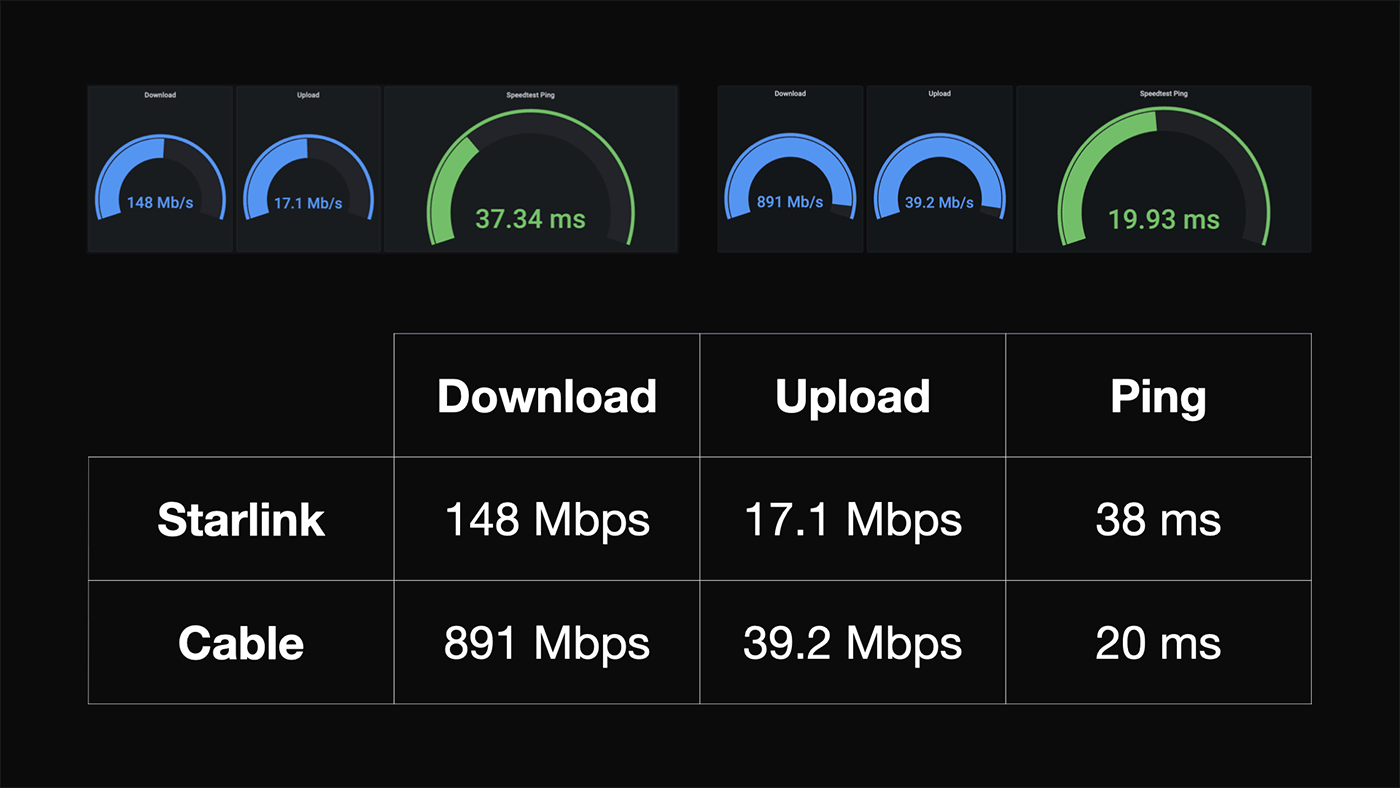SpaceX Starlink latency is comparable to wired internet in some areas and better in others.

SpaceX Starlink Latency: How Does it Compare to Wired Internet?
SpaceX Starlink is a satellite internet service that is designed to provide high-speed internet to rural and remote areas. One of the key advantages of Starlink is its low latency, which is the time it takes for a signal to travel from your device to the Starlink satellite and back.
Advertisement
Current Latency
The current latency of Starlink is around 25-40 milliseconds (ms). This is comparable to the latency of wired internet in many areas. However, Starlink's latency is still higher than the latency of fiber optic internet, which can be as low as 10 ms.
Advertisement
Future Latency
SpaceX is working to reduce the latency of Starlink. The company has said that it expects to achieve a latency of 15-20 ms in the future. This would make Starlink comparable to fiber optic internet in terms of latency.
Comparison to Wired Internet
In areas where wired internet is not available or reliable, Starlink can be a good alternative. Starlink also offers faster speeds than traditional satellite internet, making it a good option for gaming and streaming video.
Overall, Starlink is a viable option for people who need high-speed internet in rural areas or who have unreliable wired internet. The latency of Starlink is comparable to wired internet in some areas and better in others. SpaceX is working to reduce the latency of Starlink even further, making it a more attractive option for gamers and streamers.
Advertisement
Here are some additional details about the latency of Starlink:
- The latency of Starlink can vary depending on your location and the number of satellites that are currently in orbit.
- Starlink's latency is also affected by the weather. In cloudy or rainy conditions, the latency of Starlink can increase.
- SpaceX is working to improve the latency of Starlink by adding more satellites to its constellation and by developing new technologies.
Here are some of the benefits of using Starlink:
- High-speed internet: Starlink offers download speeds of up to 200 Mbps and upload speeds of up to 10 Mbps. This is faster than the speeds offered by traditional satellite internet.
- Low latency: As mentioned above, the latency of Starlink is comparable to wired internet in some areas. This makes it a good option for gaming and streaming video.
- Global coverage: Starlink is currently available in select countries, but SpaceX plans to expand its coverage to the entire globe in the future.
- Reliability: Starlink is designed to be more reliable than traditional satellite internet. The satellites are in low Earth orbit, which means that they are less affected by weather conditions.
Here are some of the drawbacks of using Starlink:
- Price: Starlink is more expensive than traditional satellite internet. The cost of the kit is $499, and the monthly subscription is $99.
- Beta testing: Starlink is still in beta testing, which means that there may be some outages or performance issues.
- Data caps: Starlink has a monthly data cap of 100 GB. If you exceed this limit, you will be charged an additional $10 per GB.
Overall, Starlink is a promising new satellite internet service that offers high speeds, low latency, and global coverage. However, it is still in beta testing and is more expensive than traditional satellite internet. If you are looking for a reliable and affordable internet option for rural areas, Starlink may be a good choice for you.